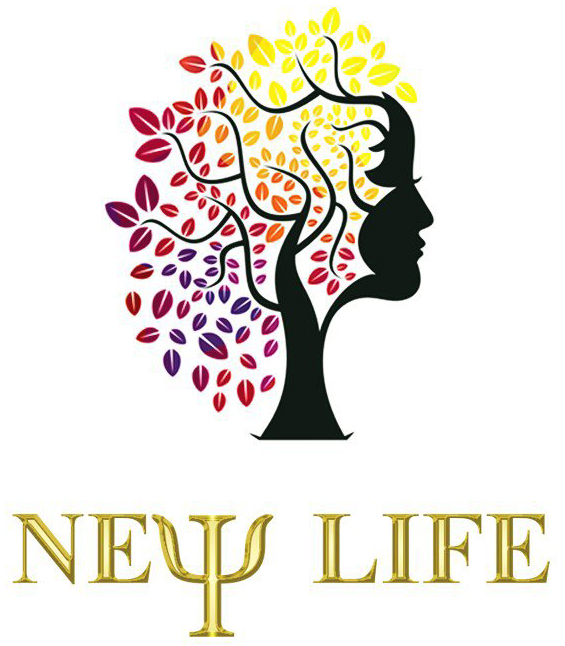1. Introduction: The Intersection of Mythology and Modern Entertainment
Throughout human history, symbols derived from ancient mythologies have played a vital role in shaping cultural identities and transmitting societal values. These symbols—ranging from gods and mythical creatures to sacred objects—serve as visual representations of complex ideas, beliefs, and shared histories. As entertainment evolved from ancient rituals and storytelling to modern digital formats, the influence of these timeless symbols persisted, morphing into tools for storytelling, branding, and immersive experiences.
Today, the relationship between mythology and entertainment is more intertwined than ever. Modern games and visual media often draw inspiration from ancient stories and symbols, creating engaging worlds that resonate with cultural archetypes and historical themes. This article explores how ancient symbols continue to influence contemporary entertainment, particularly in gaming, and examines the educational and ethical considerations involved in this ongoing dialogue.
Contents
- The Role of Symbols in Ancient Cultures and Their Legacy
- Mythology as a Foundation for Modern Entertainment
- From Ancient Symbols to Modern Game Design
- The Evolution of Gaming: From Mechanical to Digital
- «Le Zeus» and the Embodiment of Mythological Power in Modern Games
- Non-Obvious Connections: Mythology, Psychology, and Entertainment
- Cultural Appropriation and Ethical Considerations
- Future Trends: The Continued Fusion of Ancient Symbols and Digital Entertainment
- Conclusion: Bridging the Past and Present Through Symbols and Stories
2. The Role of Symbols in Ancient Cultures and Their Legacy
a. Common symbols and motifs in ancient mythologies (e.g., gods, mythical creatures)
Ancient civilizations relied heavily on symbols to communicate their worldview. For instance, Egyptian hieroglyphs combined pictorial representations with spiritual meanings, while Greek mythology often depicted gods like Zeus or Poseidon as symbols of power and natural forces. Mythical creatures such as the Phoenix or the Sphinx embodied concepts like rebirth or mystery, serving as visual shorthand for complex ideas.
b. How symbols conveyed values, beliefs, and societal structures
Symbols functioned as educational tools, reinforcing societal norms and religious beliefs. For example, the lion in many cultures signified strength and kingship, often associated with divine authority. In Mesopotamian art, the winged bull symbolized protection and divine power. These symbols not only communicated societal values but also established hierarchies and spiritual hierarchies that persisted through generations.
c. The enduring influence of these symbols in modern visual language
Today, many symbols from ancient cultures are embedded in modern logos, flags, and media. The grecian motifs, for example, continue to symbolize wisdom and divine authority, while mythological imagery is frequently used in branding and entertainment to evoke familiarity and depth.
3. Mythology as a Foundation for Modern Entertainment
a. The adaptation of mythological stories in literature, theatre, and arts
Classical myths have profoundly influenced literature and theatre, inspiring works from Homer’s Odyssey to Shakespeare’s plays. These stories often explore universal themes such as heroism, fate, and morality, making them adaptable to various artistic forms. Modern adaptations reimagine these myths, blending tradition with contemporary perspectives.
b. Transition from storytelling to visual and interactive media
With technological advances, mythological stories now find expression through films, animation, and video games. Interactive media, in particular, allows players to embody mythic heroes or gods, experiencing stories firsthand. This evolution enhances engagement and enables a deeper understanding of ancient narratives.
c. Examples of myth-inspired themes in movies, TV series, and games
Notable examples include the Hercules Disney animated film, the Marvel Cinematic Universe’s portrayal of gods like Thor and Loki, and video games such as God of War, which reimagines Norse mythology. These adaptations demonstrate how myth can serve as a rich source for entertainment that appeals across generations.
4. From Ancient Symbols to Modern Game Design
a. How symbols from mythology are incorporated into game aesthetics and narratives
Game designers often integrate mythological symbols to create visually compelling worlds. For example, divine imagery like lightning bolts or sacred animals can evoke a sense of power and mystery. These symbols also serve narrative purposes, guiding players through stories rooted in mythic themes such as heroism, destiny, and divine intervention.
b. The role of symbols in creating immersive gaming worlds
Symbols enrich game environments, making them feel authentic and layered with meaning. Ancient temples, symbolic artifacts, and myth-inspired architecture deepen immersion. For instance, the use of Greek columns and statues in modern slots transports players into mythic worlds, enhancing both visual appeal and thematic coherence.
c. Case study: The use of divine imagery and mythological elements in popular video slots
Many slot games incorporate mythological themes, leveraging symbols like Zeus’s lightning, Athena’s owl, or Norse runes. These elements not only attract players through their visual appeal but also imbue gameplay with a sense of grandeur and mythic significance. Such games often serve as educational portals, subtly introducing players to ancient symbols and stories.
5. The Evolution of Gaming: From Mechanical to Digital
a. Brief history of gaming, highlighting milestones (e.g., first video slot by Fortune Coin in 1976)
The gaming industry began with mechanical devices like the Liberty Bell slot in the early 20th century. The advent of electronic and digital technologies marked milestones such as the first video slot by Fortune Coin in 1976, which revolutionized gameplay with digital graphics and sound. These innovations paved the way for complex, themed, and mythologically inspired games.
b. The rise of thematic games inspired by ancient myths and symbols
Modern developers craft games centered around mythic themes, utilizing symbols to create immersive worlds. Titles inspired by Egyptian, Greek, or Norse mythology often feature iconic imagery and stories, appealing to both entertainment and educational interests.
c. How technological advancements have enabled complex mythological storytelling in games
Advances in graphics, AI, and virtual reality allow developers to craft detailed worlds filled with mythic symbols and narratives. These technologies enable players to explore ancient civilizations interactively, fostering both entertainment and cultural understanding.
6. «Le Zeus» and the Embodiment of Mythological Power in Modern Games
a. Overview of «Le Zeus» as a modern example of myth-inspired gaming
«Le Zeus» exemplifies how contemporary games can incorporate ancient symbols to create engaging experiences. By blending Greek mythology with modern game mechanics, it provides players with both entertainment and a subtle educational component.
b. Analysis of how «Le Zeus» incorporates symbols of Zeus and Greek mythology
The game features visual motifs such as lightning bolts, laurel wreaths, and Greek temple architecture—each symbolizing Zeus’s divine authority and power. These elements serve dual purposes: enhancing visual appeal and reinforcing mythological themes, making the experience immersive and meaningful.
c. The educational value of such games in understanding ancient symbols and stories
While primarily designed for entertainment, games like «Le Zeus» can spark curiosity about Greek mythology. Recognizing symbols like the thunderbolt or the eagle helps players connect game imagery with historical and mythological contexts, fostering a deeper appreciation of ancient stories.
7. Non-Obvious Connections: Mythology, Psychology, and Entertainment
a. The psychological appeal of mythological symbols in gaming (e.g., archetypes, hero’s journey)
Mythological symbols tap into universal archetypes—heroes, tricksters, mentors—that resonate deeply within the human psyche. Carl Jung’s theories highlight how these archetypes evoke recognition and emotional responses, making games featuring mythic themes inherently compelling.
b. How ancient symbols evoke emotional responses and cultural recognition
Symbols such as the Greek omega or Norse runes evoke a sense of mystery and reverence. Their familiarity can trigger cultural memories, creating a connection that enhances engagement and emotional investment in games and stories.
c. The role of symbols in enhancing engagement and storytelling depth in games
Effective use of ancient symbols adds layers of meaning, encouraging players to interpret and explore mythic narratives. This depth fosters longer engagement and enriches the gaming experience beyond simple entertainment.
8. Cultural Appropriation and Ethical Considerations
a. Risks of misrepresenting or trivializing ancient symbols and myths
Inaccurate or disrespectful portrayals can distort cultural meanings, leading to stereotypes or cultural insensitivity. For example, commodifying sacred symbols without understanding their significance risks trivializing their importance.
b. Responsible design principles for integrating mythology into entertainment
Designers should engage with cultural experts and conduct thorough research to ensure respectful representation. Incorporating authentic symbols and stories, while avoiding cultural stereotypes, fosters respect and educational value.
c. The importance of respecting cultural origins and contexts
Recognizing the origins of symbols and stories helps maintain their integrity. Games can serve as platforms for cultural education, provided they are developed with sensitivity and awareness.
9. Future Trends: The Continued Fusion of Ancient Symbols and Digital Entertainment
a. Emerging technologies (AR, VR) and their potential to deepen mythological immersion
Augmented and virtual reality can create immersive environments where players explore mythic worlds firsthand, interacting with symbols and stories in three dimensions. This technological leap offers educational opportunities while enhancing entertainment.
b. The role of educational games in teaching history and mythology through entertainment
Games designed with pedagogical intent can teach players about ancient cultures and symbols, fostering cultural literacy. Such initiatives blend fun with learning, making history accessible and engaging.
c. Predictions for how ancient symbols will evolve within new gaming paradigms
As technology advances, expect richer, more interactive mythological experiences. Symbols may become dynamic, reacting to player choices, thus deepening the connection between ancient stories and future entertainment forms.
10. Conclusion: Bridging the Past and Present Through Symbols and Stories
“Ancient symbols serve as universal language, bridging millennia of human experience and modern entertainment.”
The enduring power of ancient symbols lies in their ability to evoke universal themes and cultural memories. As modern game design continues to draw from these rich sources, it creates opportunities not only for entertainment but also for education and cultural appreciation. Responsible integration, respecting origins while leveraging technological innovations, ensures that this dialogue between past and present remains meaningful and respectful.
By understanding the deep roots of these symbols, creators and players alike can participate in a shared cultural heritage—one that enriches storytelling and fosters a greater appreciation for the timeless narratives that define humanity.



